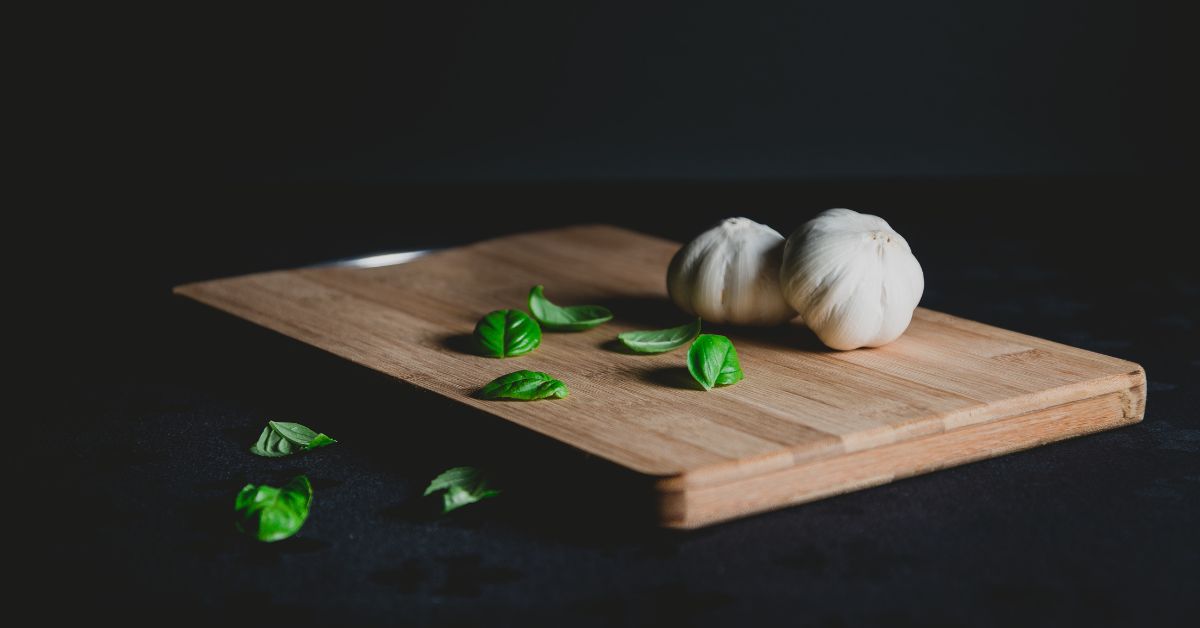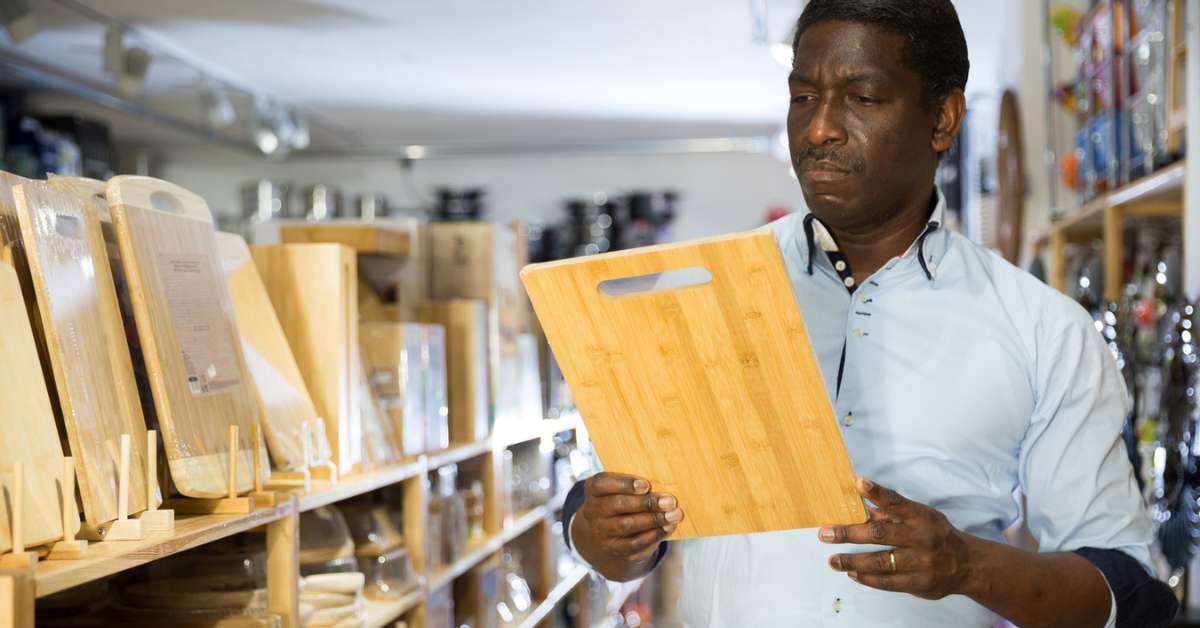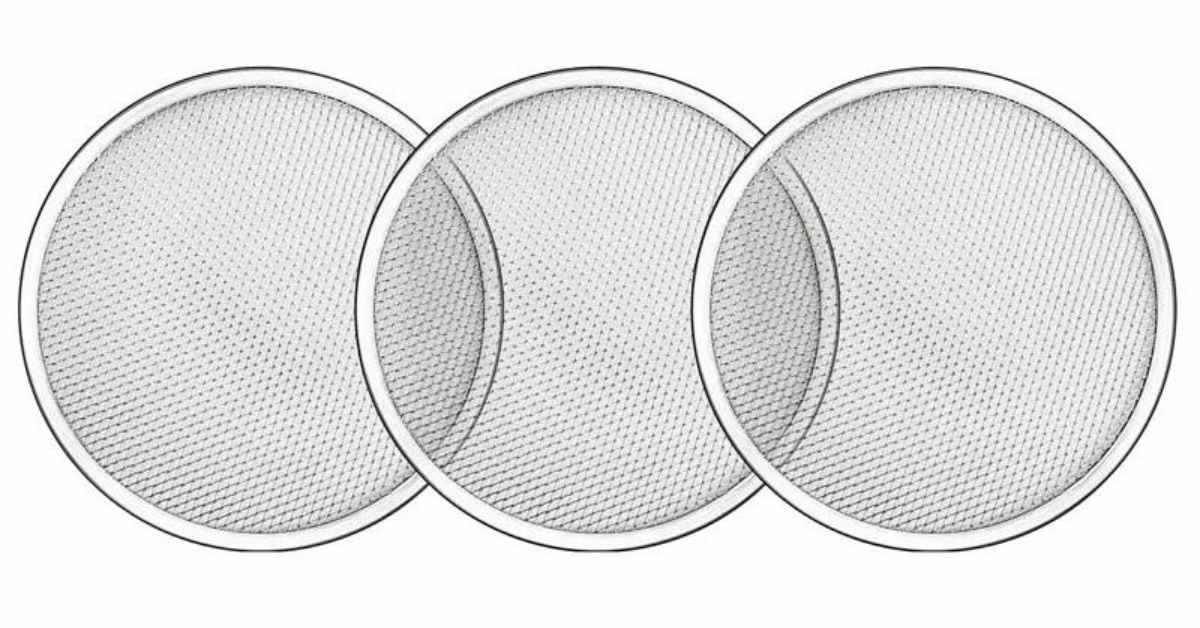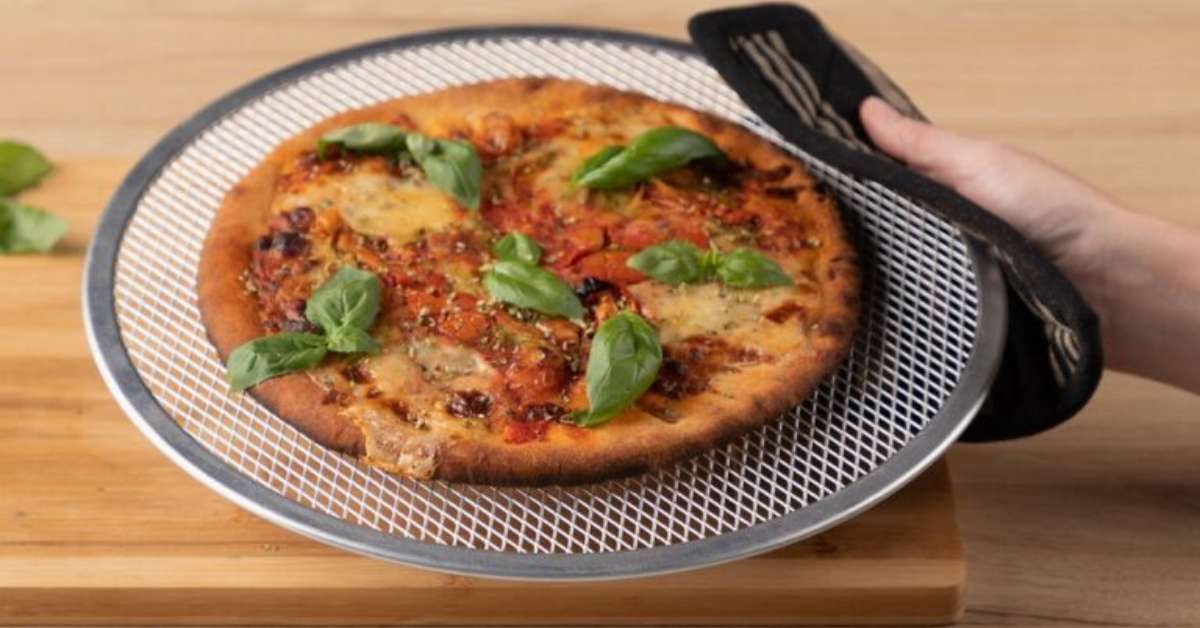Rubberwood has become a popular material for many products due to its durability, affordability, and eco-friendliness. However, there is a debate on whether Rubberwood is a good choice for cutting boards.
This article will explain “Is RubberWood Good for Cutting Boards” and briefly overview the debate on whether it suits cutting boards. We aim to help you decide whether Rubberwood is a good option for your cutting board needs.
Table of Contents
ToggleWhat is RubberWood
Rubberwood is a hardwood obtained from the rubber tree, also known as Hevea brasiliensis. Unlike other types of wood harvested for timber, Rubberwood is primarily sourced from rubber plantations after the trees have completed their latex-producing cycle. This attribute makes it an environmentally friendly and sustainable furniture and other goods option.
Rubberwood has several unique characteristics that make it popular for use in manufacturing. It is lightweight, easy to handle, and exhibits a tight and consistent grain pattern. It also has a light-coloured, creamy appearance that can be stained or finished to resemble other types of wood.
However, like any material, Rubberwood has its advantages and disadvantages. Some of its advantages include its eco-friendliness, durability, and affordability. On the other hand, due to its lighter weight and softer nature compared to other hardwood types, it may need to be more suitable for cutting boards that require high durability and resistance to heavy use.
The Cutting Board Debate
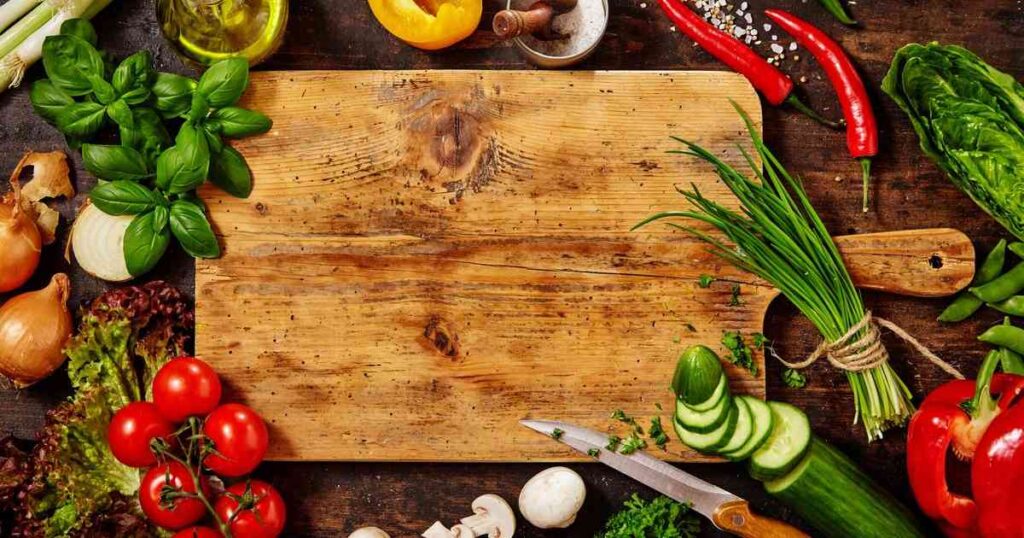
Selecting the appropriate cutting board is crucial for home cooks and professional chefs. At the same time, there are several materials to choose from, including plastic, bamboo, and hardwood. The debate over whether Rubberwood is a suitable option for cutting boards continues.
One of the benefits of Rubberwood cutting boards is their eco-friendliness, as they are made from a sustainable and renewable resource. They are also relatively affordable and have a light, attractive appearance that complements kitchen decor.
However, there are also some drawbacks to using Rubberwood cutting boards. One of the main concerns is their hardness, as Rubberwood is less dense or complex than other hardwoods like maple or walnut. This can make it more prone to scratches, dents, and other damage over time.
Another concern is their maintenance, as Rubberwood cutting boards may require more upkeep than other materials. For example, they may need to be oiled regularly to prevent cracking or warping, which can be time-consuming and inconvenient.
Is RubberWood Cutting Board Safe
One of the main concerns when considering Rubberwood cutting boards is whether or not they are safe for food preparation. While Rubberwood is a sustainable and eco-friendly material, some people worry about the safety of using this type of wood in contact with food.
The good news is that Rubberwood cutting boards can be safe for food preparation if correctly cared for and maintained. It is important to note that all cutting boards, regardless of the material, can potentially harbour harmful bacteria if not cleaned and sanitized correctly.
Advantages of RubberWood Cutting Boards
Some of the critical benefits of Rubberwood cutting boards include the following:
Durability and longevity: Rubberwood is a durable material that can withstand heavy use in the kitchen. With proper care and maintenance, Rubberwood cutting boards can last many years, making them a good investment for any kitchen.
Knife-friendly surface: Rubberwood has a softer surface than other hardwoods, which can benefit knife blades. Rubberwood cutting boards are less likely to dull or damage your knives over time.
Eco-friendliness and sustainability: As mentioned earlier, Rubberwood is a sustainable and renewable resource. By using Rubberwood cutting boards, you can feel good about making an eco-friendly choice that supports responsible forestry practices.
Resistance to bacteria and mold: Rubberwood cutting boards have natural antimicrobial properties, making them resistant to mold growth. This can help reduce the risk of cross-contamination and foodborne illness.
Affordability: Rubberwood is a relatively affordable material compared to other hardwoods like maple or walnut. This makes it a budget-friendly option for home cooks and chefs who want a high-quality cutting board without breaking the bank.
Overall, It offers an outstanding balance of durability, knife-friendliness, eco-friendliness, and affordability, making them an excellent choice for anyone looking for a reliable and functional kitchen-cutting board.
Disadvantages of RubberWood Cutting Boards
Here are a few of the main disadvantages of Rubberwood cutting boards:
Porous surface: Rubberwood has a relatively porous surface compared to other hardwoods. This means it can absorb liquids and bacteria more quickly, making cleaning and sanitizing difficult.
Need for proper maintenance: Like all cutting boards, Rubberwood boards require proper maintenance to ensure longevity and safety. This includes regular cleaning, sanitizing, and oiling to prevent the wood from drying out and cracking.
Potential health hazards: Some people may have an allergic reaction to Rubberwood or the chemicals used in its processing. Additionally, there is a risk of chemical contamination if the Rubberwood is treated with pesticides or other chemicals during its growth or processing.
Susceptibility to Warping and Cracking: Rubberwood is a relatively soft and lightweight material, making it more prone to warping and cracking over time, exceptionally if not correctly cared for.
Overall, while Rubberwood cutting boards can offer many benefits, weighing these against the potential drawbacks is essential to determine whether they are the right choice for your kitchen.
Comparing RubberWood to Other Cutting Board Materials
Here is a brief comparison of Rubberwood to some other popular cutting board materials:
Bamboo Cutting Boards
Like Rubberwood, bamboo is a sustainable and eco-friendly material resistant to bacteria and mold growth. However, bamboo is a more rigid material than Rubberwood, which can make it tougher on knife blades over time.
Plastic Cutting Boards
Plastic cutting boards are affordable, lightweight, and easy to clean. However, they can also harbour bacteria more quickly than other materials and may need to be replaced more frequently.
Glass Cutting Boards
Glass cutting boards are easy to clean and non-porous, making them resistant to bacteria and mold growth. However, they are tough and can quickly dull knife blades.
Wooden Cutting Boards (oak, maple, walnut)
Wooden cutting boards are a classic choice that offers durability, knife-friendliness, and an attractive appearance. However, they can be more expensive than other materials and require regular maintenance to prevent warping, cracking, and bacterial growth.
Overall, each material has its advantages and disadvantages regarding cutting boards. The right choice for you will depend on your personal preferences, cooking style, and budget.
Factors to Consider When Buying a RubberWood Cutting Board
If you are considering purchasing a Rubberwood cutting board, there are a few factors to keep in mind:
Size and Thickness
Consider how much space you have in your kitchen and how you plan to use the cutting board. A giant board may be better for cutting more oversized items or multiple ingredients at once, while a smaller board may be easier to store and clean.
Grain Orientation
Look for a board with a consistent and tight grain pattern, which can help prevent warping and cracking over time. End-grain boards, where the end of the wood faces up, are often preferred for their durability and knife-friendliness.
Quality of Construction
Pay attention to the quality of the cutting board’s construction. Check for defects or signs of poor artistry, such as gaps between the wood pieces or rough edges. A well-constructed board should be sturdy and solid without wobbling or flexing.
Brand reputation
Consider the reputation of the brand or manufacturer when choosing a Rubberwood cutting board. Look for brands with a history of producing high-quality and durable cutting boards, and read customer reviews to get an idea of the board’s performance and longevity.
How to Maintain RubberWood Cutting Boards
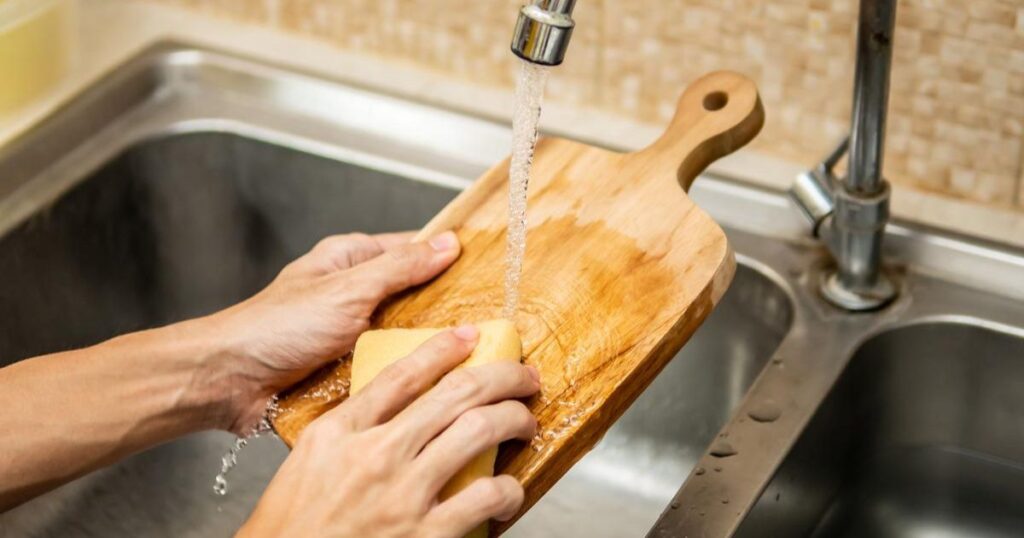
It is essential to follow proper maintenance practices to keep your Rubberwood cutting board in good condition and ensure its longevity. Here are some critical steps to keep in mind:
Cleaning and Sanitizing
After each use, wash the cutting board with hot, soapy water and a non-abrasive sponge or cloth. Rinse thoroughly and dry with a clean towel. For deeper cleaning and sanitizing, you can use a solution of white vinegar and water or a food-safe disinfectant spray.
Oiling and Conditioning
To prevent the wood from drying out and cracking, regularly oil your Rubberwood cutting board with food-grade mineral oil or a specialized cutting board oil. Apply a generous amount of oil to the board, let it soak in for several hours or overnight, and then wipe away any excess with a clean cloth.
Storing and Handling
Store your cutting board in a dry, cool place away from direct sunlight and heat sources. Avoid stacking heavy items on the board or placing them where they may warp or bend. Use a separate cutting board for raw meats and other potentially contaminated foods to prevent cross-contamination.
Common Mistakes to Avoid
Do not soak your cutting board in water or put it in the dishwasher, which can cause warping and cracking. Avoid using harsh chemicals or abrasive cleaners that can damage the wood surface. Do not let your cutting board air dry or store it in a damp or humid environment, as this can promote the growth of bacteria and mold.
How to Use RubberWood Cutting Boards Safely
Here are some tips for using your cutting board safely:
Preventing cross-contamination: Use separate cutting boards for raw meats and other foods to prevent cross-contamination. Clean and sanitize your cutting board thoroughly after each use.
Proper knife usage: Use a sharp knife and avoid excessive force or pressure when cutting. This will help prevent the knife from slipping and causing injury. It will also reduce the wear and tear on your cutting board.
Avoiding excessive force: Do not use your cutting board as a surface for pounding or hammering. This can damage the surface and cause it to crack or warp.
Tips for Prolonging the Lifespan of a Rubberwood Cutting Board
To extend the lifespan of your cutting board, make sure to oil it regularly and avoid exposing it to extreme temperatures or moisture. Use a cutting board with a grain orientation that matches your cutting style. A thick cutting board is also more durable and long-lasting.
RubberWood Cutting Boards: Recommendations
If you are considering purchasing a RubberWood cutting board, knowing which ones are the best on the market is essential.
Best RubberWood cutting boards on the market:
Totally Bamboo Rubberwood Cutting Board: This cutting board is made from high-quality, sustainable RubberWood and features a knife-friendly surface that won’t dull your blades. It is also reversible and has a juice groove on one side.
Virginia Boys Kitchens Large Walnut and Rubberwood Cutting Board: This cutting board is handcrafted in the USA from sustainable RubberWood and features a large, sturdy surface that can handle even the biggest chopping tasks. It is also reversible and has a juice groove on one side.
Bambu Home Rubberwood Utility Cutting Board: This cutting board is made from organic, eco-friendly RubberWood and is compact for smaller kitchens. It is also reversible and has a juice groove on one side.
Conclusion
RubberWood cutting boards have gained popularity recently due to their durability, eco-friendliness, and resistance to bacteria and mold. However, they also have drawbacks, such as their porous surface and susceptibility to warping and cracking.
When considering whether to invest in a RubberWood cutting board, it’s essential to weigh the pros and cons and consider factors such as size, quality of construction, and brand reputation. With proper maintenance and safe usage, a RubberWood cutting board can be a great addition to any kitchen.

